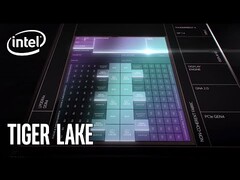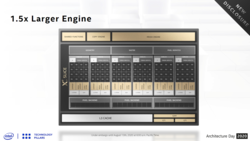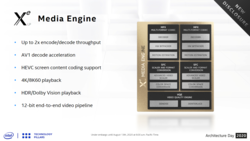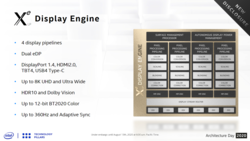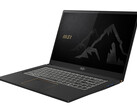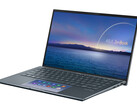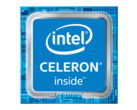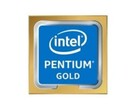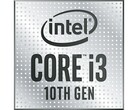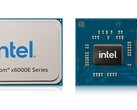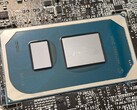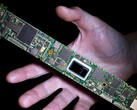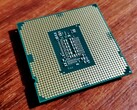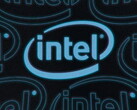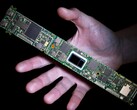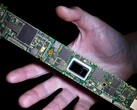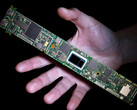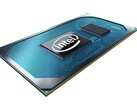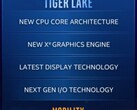After having showed us a glimpse of what goes into the Willow Cove architecture and the new SuperFin fabrication process, Intel has officially unveiled the 11th generation Tiger Lake CPU lineup today. Tiger Lake is a successor to Ice Lake-U and continues to be fabbed on the 10 nm process. However, compared to the Sunny Cove architecture in Ice Lake, Tiger Lake now offers a re-designed middle-level cache of 1.25 MB and can supposedly deliver higher frequencies at lower voltages. Combined with Intel's new Xe graphics platform that promises never-before-seen graphics performance on an iGPU, there's a lot to like in the 11th generation. So, let's get started.
SKUs and Availability — No more U and Y branding
Usually, Intel announces the Y series alongside the U-series chips. However, things have changed this time around. We get to hear from our sources that Intel will still continue to offer 12 W and 7 W SKUs but without any explicit consumer-facing branding. OEMs, though, will get to choose between Tiger Lake UP3 and Tiger Lake UP4, with the latter being a smaller package and using a different socket. The following are specifications of UP3 and UP4 SKUs. Items marked with a "*" indicates information obtained from our sources and may not be final or official.
Tiger Lake UP3
| SKU | Cores / Threads | cTDP Up (W) | cTDP Down (W) | Base Clock (GHz) | Max 1C Turbo (GHz) | Max 2C Turbo *(GHz) | Max 4C Turbo (GHz) | L3 Cache (MB) | GPU | EU Count | GPU Frequency Base/Boost (GHz) | LPDDR4x / DDR4 Data Transfer Rate (MT/s) | Intel DL Boost / GNA 2.0 | Intel SIPP * | Intel vPro * | Intel TXT * |
|---|---|---|---|---|---|---|---|---|---|---|---|---|---|---|---|---|
| Core i7-1185G7 | 4/8 | 28 | 12 | 3.0 | 4.8 | 4.8 | 4.3 | 12 | Iris Xe Graphics | 96 | 400/1350 | 4267 / 3200 | Yes | No | No | No |
| Core i7-1165G7 | 4/8 | 28 | 12 | 2.8 | 4.7 | 4.7 | 4.1 | 12 | Iris Xe Graphics | 96 | 400/1300 | 4267 / 3200 | Yes | No | No | No |
| Core i5-1145G7 * | 4/8 | 28 | 12 | 2.6 | 4.4 | 4.4 | 4.0 | 8 | Iris Xe Graphics | 80 | 400/1300 | 4267 / 3200 | Yes | Yes | Yes | Yes |
| Core i5-1135G7 | 4/8 | 28 | 12 | 2.4 | 4.2 | 4.2 | 3.8 | 8 | Iris Xe Graphics | 80 | 400/1300 | 4267 / 3200 | Yes | No | No | No |
| Core i5-1125G4 | 4/8 | 28 | 12 | 2.0 | 3.7 | 3.7? | 3.3 | 8 | UHD Graphics | 48 | 400/1300 | 4267 / 3200 | Yes | No | No | No |
| Core i3-1115G4 | 2/4 | 28 | 12 | 3.0 | 4.1 | 4.1 | N/A | 6 | UHD Graphics | 48 | 400/1250 | 3733 / 3200 | Yes | No | No | No |
| Pentium Gold 7505 * | 2/4 | 15 | N/A | 2.0 | 3.5 | 3.4 | N/A | 4 | UHD Graphics | 48 | 400/1250 | 3733 / 3200 | Yes ? | No | No | No |
| Celeron 6305 * | 2/2 | 15 | N/A | 1.8 | 1.8 | 1.8 | N/A | 4 | UHD Graphics | 48 | 400/1250 | 3733 / 3200 | Yes ? | No | No | No |
The Tiger Lake UP3 series has a 12 W cTDP down and a 28 W cTDP up. The flagship SKU here is the Core i7-1185G7, which is a 4C/8T part with single and dual-core boosts of 4.8 GHz and an all-core boost of 4.3 GHz. The base clock i.e. the frequency at cTDP up is 3.0 GHz and that can be dialed-down to 1.2 GHz — a likely possibility when using convertibles in tablet mode to keep skin temperatures down.
The Core i3-1125G4, Core i3-1115G4, Pentium Gold 7505 and the Celeron 6305 sport UHD Graphics while the rest of the Tiger Lake UP3 SKUs feature the new Intel Iris Xe Graphics (more on that later). Despite the older nomenclature, the UHD Graphics here is Gen12 as well. The Intel Xe Graphics iGPU is clocked at 400 MHz base and 1,350 MHz boost in the Core i7-1185G7 with the other Xe GPUs clocked at 1,300 MHz boost. The UHD Graphics versions are clocked at 1,250 MHz boost. All UP3 SKUs support DDR4-3200 while the Core i5 and Core i7 variants support LPDDR4-4267 RAM. The Core i3, Pentium, and Celeron, on the other hand, support LPDDR4-3733 RAM.
Intel hasn't talked about vPro versions of Tiger Lake yet, but our sources indicate that the Core i7-1185G7 along with the Core i5-1145G7 will also be available in vPro versions with support for platform features such as Intel Stable IT Platform Program (SIPP) and Trusted Execution Technology (TXT).
Tiger Lake UP4
| SKU | Cores / Threads | cTDP Up (W) | cTDP Down (W) | Base Clock (GHz) | Max 1C Turbo (GHz) | Max 2C Turbo *(GHz) | Max 4C Turbo (GHz) | L3 Cache (MB) | GPU | EU Count | GPU Frequency Base/Boost (GHz) | LPDDR4x / DDR4 Data Transfer Rate (MT/s) | Intel DL Boost / GNA 2.0 | Intel SIPP * | Intel vPro * | Intel TXT * |
|---|---|---|---|---|---|---|---|---|---|---|---|---|---|---|---|---|
| Core i7-1180G7 * | 4/8 | 15 | 7 | 2.2 | 4.6 | 4.6 | 3.7 | 12 | Iris Xe Graphics | 96 ? | 400/1100 | 4267 / 3200 | Yes | Yes | Yes | Yes |
| Core i7-1160G7 | 4/8 | 15 | 7 | 1.2 | 4.4 | 4.4 | 3.6 | 12 | Iris Xe Graphics | 96 | 400/1100 | 4267 / 3200 | Yes | No | No | No |
| Core i5-1140G7 * | 4/8 | 15 | 7 | 1.8 ? | 4.2 | 4.2 | 3.5 | 8 | Iris Xe Graphics | 80 ? | 400/1100 | 4267 / 3200 | Yes | Yes | Yes | Yes |
| Core i5-1130G7 | 4/8 | 15 | 7 | 1.1 | 4.0 | 4.0 ? | 3.4 | 8 | Iris Xe Graphics | 80 | 400/1100 | 4267 / 3200 | Yes | No | No | No |
| Core i3-1120G4 | 4/8 | 15 | 7 | 1.1 | 3.5 | 3.5 ? | 3.0 | 8 | UHD Graphics | 48 | 400/1100 | 4267 / 3200 | Yes | No | No | No |
| Core i3-1110G4 | 2/4 | 15 | 7 | 1.8 | 3.9 | 3.9 | N/A | 6 | UHD Graphics | 48 | 400/1100 | 4267 / 3200 | Yes | No | No | No |
The Tiger Lake UP4 series has a 7 W cTDP down and a 15 W cTDP up and can be considered as a Y series for all intents and purposes. The UP4 lineup starts from the Core i3-1110G4 and tops out with the Core i7-1180G7. As is evident from the specs above, the UP4 offers lower CPU and GPU clocks in order to keep the TDP within the prescribed limit. Nevertheless, we do find that the Core i7-1180G7 can offer a decent 4.6 GHz single/double-core boost and a 3.7 GHz all-core boost. Similar to the UP3 series, the Core i7-1180G7 and the Core i5-1140G7 will be available in vPro configurations as well.
Performance comparison — Taking the fight to AMD Ryzen 4000
Now that we have an idea of what SKUs Tiger Lake is comprised of, we will do a quick CPU comparison in synthetic tests to see if there are really any tangible improvements in the 11th generation. Do note that these results are from pre-release Tiger Lake-powered laptops and provided by our sources.
Intel may not be a fan of Cinebench comparisons, but the preliminary benchmark values we got do present an interesting paradigm. In Cinebench R15 (CB15), the single-thread performance gains are immediately evident with the Core i7-1165G7 bagging a 24% higher score compared to the Ice Lake Core i7-1065G7. Both the Core i7-1165G7 and the Core i5-1135G7 are faster (15% and 7%, respectively) than the Comet Lake-U Core i7-10710U, which is actually a 6C/12T part. In fact, the Core i7-1165G7 easily overtakes both the AMD Ryzen 5 4500U and the Ryzen 7 4700U with leads of up to 24% in single-core.
Understandably though, the Core i7-10710U leads in CB15 multi-core but not by a significant margin — it is only 8% faster than the Core i7-1165G7 and the latter is in turn just 3% slower than the Ryzen 7 4700U, which is an 8C/8T part. Good gains are also seen with the Core i5-1135G7, which seems to be about 14% faster than the Ice Lake Core i5-1035G7 and 22% faster than the Core i7-1065G7.
Cinebench R20 (CB20) results also show interesting results. However, here we see the Core i5-1165G7 leading the charts with a 23% uplift in single-core compared to the Core i7-10710U and the Ryzen 7 4700U, and a 26% higher score compared to the Core i7-1065G7. Even the Core i5-1135G7 offers a 10% higher performance over the Ryzen 7 4700U and a 19% increase compared to the Core i5-1035G7.
In the CB20 multi-core test, the Core i7-1165G7 manages to come within 3% of the Ryzen 7 4700U and the Core i7-10710U while securing a comfortable 16% lead over the Ryzen 5 4500U. The Core i5-1135G7 also seems to offer excellent multi-core performance and is nearly 65% faster than the Core i5-1035G7.
In 3DMark 11, the Core i7-1165G7 lags by about 13% compared to the Comet Lake Core i7-10710U. This can probably be attributed to the higher core count in the latter. Interestingly, the Core i7-1165G7 beats the Ryzen 7 4700U by 18% and offers a 38% improvement over the Core i7-1065G7. Similar results are seen in 3DMark Time Spy CPU and Fire Strike Physics scores as well, this time with up to 59% leads over the Core i7-1065G7.
| 3DMark | |
| 2560x1440 Time Spy CPU | |
| Average AMD Ryzen 7 4800U (6229 - 6750, n=3) | |
| Intel Core i7-10710U | |
| Intel Core i7-1165G7 | |
| Average Intel Core i7-10710U (3579 - 6256, n=4) | |
| Average AMD Ryzen 7 4700U (3420 - 5345, n=9) | |
| AMD Ryzen 7 4700U | |
| Intel Core i5-1135G7 | |
| AMD Ryzen 5 4500U | |
| Average Intel Core i7-1065G7 (2273 - 4435, n=28) | |
| Average Intel Core i7-10810U (2331 - 4127, n=5) | |
| Intel Core i7-1065G7 | |
| Intel Core i7-10610U | |
| 1920x1080 Fire Strike Physics | |
| Average AMD Ryzen 7 4800U (16762 - 19769, n=3) | |
| Intel Core i7-10710U | |
| Intel Core i7-1165G7 | |
| Average Intel Core i7-10710U (9496 - 15892, n=6) | |
| Average AMD Ryzen 7 4700U (10953 - 15386, n=11) | |
| AMD Ryzen 7 4700U | |
| Intel Core i5-1135G7 | |
| AMD Ryzen 5 4500U | |
| Average Intel Core i7-10810U (9003 - 11864, n=5) | |
| Average Intel Core i7-1065G7 (2752 - 12021, n=30) | |
| Intel Core i7-1065G7 | |
| Intel Core i7-10610U | |
Intel Xe Graphics — AAA gaming now possible on an iGPU
More than the CPU side of things, Tiger Lake was highly anticipated for its new iGPU — the Gen12 Xe LP. Intel detailed what makes Xe tick during its Architecture Day 2020 briefing. Xe spans across a variety of platforms — from the Xe LP in Tiger Lake and DG1 to Xe Ponte Vecchio that is tailored for HPC applications. For Tiger Lake, Xe LP offers a maximum of 96 EUs with a promise of 2x performance uplift over Gen11. It was previously thought that Xe LP can top-out at 1.6 GHz, but for some reason our sources confirmed that Tiger Lake's Xe LP will have a maximum boost of 1.35 GHz only.
On an API level, Gen12 Xe LP supports the same DirectX (DX) 12_1 feature level as Gen11. To be fair to Intel, not launching with support for DirectX 12_2, aka DirectX 12 Ultimate, may not really be a disadvantage as most of the DX12 Ultimate feature set is too demanding for iGPU hardware.
Given that Tiger Lake will be segmented into UP3 and UP4 categories, there are some differences in the feature set of Xe LP among these two, and they are summarized as follows:
Tiger Lake Xe LP iGPU features
| Feature | Tiger Lake UP3 | Tiger Lake UP4 |
|---|---|---|
| EUs | Up to 96 | Up to 96 |
| 3D Architecture Improvements | Yes | Yes |
| On Package Cache (eDRAM) | No | No |
| OpenGL 4.6, DirectX 12 | Yes | Yes |
| OpenCL 2.2 | Yes | Yes |
| Process | 10 nm | 10 nm |
| PCIe configuration for discrete graphics | x4 PEG lane | No |
| PCI Gen Support | Gen4 PEG Gen3 PCH |
Gen4 |
| Hybrid graphics support | Yes | No |
While Xe LP in both UP3 and UP4 variants offers up to 96 EUs, the UP4 does not support discrete or hybrid graphics and is restricted to only PCIe Gen3. The subslicing of the EUs in Tiger Lake is also a bit different from what we saw with Ice Lake. While Ice Lake offered 8 (64 EUs), 6 (48 EUs), and 4 (32 EUs) subslice configurations, Tiger Lake offers 3 (48 EUs) and 6 (96 EUs) subslices. Intel also seems to have adopted a non-conventional slicing approach this time as we also see 80 EU-parts such as the Core i5-1145G7 and the Core i5-1130G7, which means a more gradual performance loss across the stack.
Tiger Lake Xe LP media features
| Feature | Ice Lake U/Y | Tiger Lake UP3/UP4 |
|---|---|---|
| Fixed function decode | 4K60 8b 4:2:0 AVC/VP8 4K60 10b 4:4:4 HEVC/VP9 8K30 10b 4:2:0 HEVC/VP9 |
4K60 8b 4:2:0 AVC/VP8 5K60 10b 4:4:4 HEVC/VP9/SCC 8K60 12b 4:2:0 HEVC/VP9/SCC 8K30 10b 4:2:0 AV1 |
| Fixed function encode | 4K60 8b 4:2:0 AVC 4K60 10b 4:4:4 HEVC/VP9 8K30 10b 4:2:0 HEVC/VP9 |
4K60 8b 4:2:0 AVC 4K60 10b 4:4:4 HEVC/VP9/SCC 8K30 10b 4:2:0 HEVC/VP9/SCC |
| Programmable encode (PAK/VME) | 4K60 8b 4:2:0 AVC 4K60 10b 4:2:0 HEVC |
4K60 8b 4:2:0 AVC 4K60 10b 4:2:0 HEVC |
| Post processing | VEBox 10b DN HDR Tone Mapping, BT2020 support (constant luminance) | VEBox 12b DN HDR Tone Mapping, BT2020 support (constant luminance) |
| Content protection | Supports Playready SL3000, HDCP 2.2 (wired and wireless) | Supports Playready SL3000, HDCP 2.3 (wired and wireless) |
We have already seen Intel detail the multimedia features of Xe LP. Compared to Gen11 in Ice Lake U/Y, Xe LP additionally offers support for 5K60 10-bit, 8K60 12-bit (4:2:0), and 8K30 10-bit (4:2:0 AVI) decode including support for the HEVC-Screen Content Coding (SCC) extension along with encoding capabilities up to 8K30 10-bit 4:2:0. SCC allows for improved HEVC compression while displaying static images. Xe LP also brings support for HDCP 2.3 in both wired and wireless modes.
Tiger Lake Xe LP display features
| Feature | Ice Lake U/Y | Tiger Lake UP3/UP4 |
|---|---|---|
| Displays | 3 pipes | 4 pipes |
| Resolution support | 4K120/5K60 (1 pipe / 1 port) 3x 4K60 HDR (concurrent) |
4K120/5K60 HDR (1 pipe / 1 port) 8K60 (2 pipe / 1port) 4x 4K60 HDR (concurrent) |
| eDP | eDP 1.4b HBR3, VDSC 1.1, 2-ports, PSR 2 (only on 1-port), MSO 2x2 | 2x eDP ports, eDP 1.4b HBR3, VDSC 1.1, 2-ports, PSR 2 (only on 1-port), MSO 2x2 |
| HDMI | HDMI 2.0b 10b, HCDP 2.2 | HDMI 2.0b 10b, HCDP 2.3 HDMI 2.1 via DP 1.4 bridge (8K60) |
| DP | DP 1.4 HBR3, VDSC 1.1, HDCP 2.2 | DP 1.4 HBR3, VDSC 1.1, HDCP 2.3 |
| Thunderbolt/USB-C | Integrated Mux USB, Thunderbolt, DPoC (up to 4 ports on ICL-U, 3 ports on ICL-Y) | Integrated Mux USB, Thunderbolt, DPoC (up to 4 ports on UP3, 3 ports on UP4) |
| Variable Refresh | Adaptive Sync | Adaptive Sync |
| HDR support | HDR10 hardware support, FP16 Dolby Vision supported on Dolby Vision-certified eDP panels | HDR10 hardware support, FP16 Dolby Vision supported on Dolby Vision-certified eDP panels |
| FB formats | 4:2:0/4:2:2/4:4:4 6b/8b/10b/12b FP16 | 4:2:0/4:2:2/4:4:4 6b/8b/10b/12b FP16, E2E memory compression |
| Visual quality | 5K 7x7 Adaptive linear scalers, 4K LACE DPST, 3DLUT HW on 1 pipe | 5K 7x7 Adaptive linear scalers, 4K LACE DPST, 3DLUT HW on 2 pipes |
On the display side of things, Xe LP is largely similar to Gen11 in Ice Lake, but we do see a few upgrades. Now, we have four display pipes instead of three, and these can power up to a 4K120, 5K60, 8K60 or four 4K60 HDR displays at once. Xe LP also supports dual eDP 1.4 ports, which should come in handy for dual-display laptops. HDMI 2.0b comes as default but support for HDMI 2.1 for 8K60 output is possible via a DP 1.4 bridge.
Xe LP synthetic benchmarks — Significant leads over Vega 8
AMD has always had the upper hand when it came to iGPU performance. That may not hold true any longer. A few months ago, we reported exclusively about how the Xe LP surpasses the Radeon RX Vega 8's graphics performance — something that even the Iris Plus Graphics G7 in Ice Lake fell way short of. Now, we have some actual numbers for a proper comparison.
In 3DMark 11, the Iris Xe Graphics G7 records a decent 10% higher score compared to the Vega 8. What looks good is the nearly 50% benefit that Xe Graphics G7 offers over the Iris Plus Graphics G7 thanks to higher EU count and higher clocks. The Xe Graphics G7 continues its winning streak with significant leads over the Vega 8 in 3DMark Time Spy, Fire Strike, and Cloud Gate GPU tests and with nearly 100% higher scores over the Iris Plus Graphics G7.
| 3DMark 11 - 1280x720 Performance GPU | |
| Average NVIDIA GeForce MX450 (6341 - 9580, n=16) | |
| Intel Iris Xe Graphics G7 96EUs | |
| Average NVIDIA GeForce MX350 (5191 - 6540, n=13) | |
| AMD Radeon RX Vega 8 (Ryzen 4000/5000) | |
| Intel Iris Plus Graphics G7 (Ice Lake 64 EU) | |
| AMD Radeon RX Vega 6 (Ryzen 4000/5000) | |
| AMD Radeon RX Vega 7 | |
| Intel UHD Graphics 620 | |
| 3DMark | |
| 2560x1440 Time Spy Graphics | |
| Average NVIDIA GeForce MX450 (1086 - 2300, n=16) | |
| Intel Iris Xe Graphics G7 96EUs | |
| Average NVIDIA GeForce MX350 (1123 - 1595, n=12) | |
| AMD Radeon RX Vega 8 (Ryzen 4000/5000) | |
| AMD Radeon RX Vega 6 (Ryzen 4000/5000) | |
| Intel Iris Plus Graphics G7 (Ice Lake 64 EU) | |
| AMD Radeon RX Vega 7 | |
| Intel UHD Graphics 620 | |
| 1920x1080 Fire Strike Graphics | |
| Average NVIDIA GeForce MX450 (4336 - 5753, n=17) | |
| Intel Iris Xe Graphics G7 96EUs | |
| Average NVIDIA GeForce MX350 (3999 - 4656, n=14) | |
| AMD Radeon RX Vega 8 (Ryzen 4000/5000) | |
| AMD Radeon RX Vega 6 (Ryzen 4000/5000) | |
| Intel Iris Plus Graphics G7 (Ice Lake 64 EU) | |
| AMD Radeon RX Vega 7 | |
| Intel UHD Graphics 620 | |
| 1280x720 Cloud Gate Standard Graphics | |
| Intel Iris Xe Graphics G7 96EUs | |
| Average NVIDIA GeForce MX450 (25467 - 33806, n=13) | |
| AMD Radeon RX Vega 8 (Ryzen 4000/5000) | |
| Average NVIDIA GeForce MX350 (23194 - 26239, n=9) | |
| AMD Radeon RX Vega 6 (Ryzen 4000/5000) | |
| AMD Radeon RX Vega 7 | |
| Intel Iris Plus Graphics G7 (Ice Lake 64 EU) | |
| Intel UHD Graphics 620 | |
Overall, these specifications and preliminary comparison numbers go on to show that Intel has really worked on getting the performance right in Tiger Lake. Once again the tides seem to be turning in favor of Intel, whose hegemony in mobile was challenged by AMD's Ryzen 4000 Renoir APUs. It is very well possible that a future H-series lineup will once again wrestle the performance crown back from AMD. Of course, AMD will not be sitting on the fence either, with Zen 3 on mobile codenamed Cezanne expected shortly after the desktop launch later this year.
Intel has said more than 150 designs based on the 11th generation Tiger Lake platform are expected to be available from OEMs such as Acer, Asus, Dell, Dynabook, HP, Lenovo, LG, MSI, Razer, Samsung, and others. This time, we will also get to see the evolution of Project Athena into Intel Evo that looks for key experience indicators (KEIs) such as consistent responsiveness on battery, system wake in less than 1 second, 9 hours+ of real-world battery life on laptops with FHD displays, and fast-charging with a 4-hour charge in under 30 minutes on laptops with FHD displays.
We are in for some great competition, ladies and gentlemen.
Source(s)
Own; Intel Tiger Lake Press Brief




